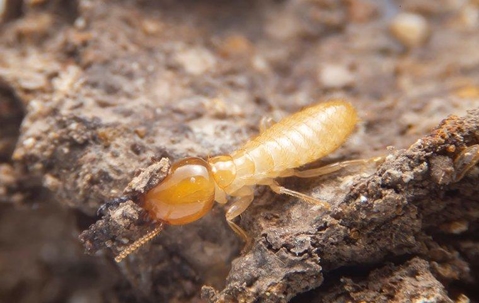Contact Us
If you live in Texas, there is a good chance you’ve heard of the Formosan termite. It is the most feared termite in the United States because of its incredible destructive capability. Of the 2,000 known species of termite, this is the most voracious, aggressive, and devious species of them all. And, while it is considered a subterranean termite, there are many differences between it and another termite we find in our service area, its close cousin, the Reticulitermes termite. For the purposes of this article, we will refer to Formosan subterranean termites as Formosan termites and Reticulitermes termites as subterranean termites. Here are some of the differences you should be aware of.
Identification
Though Formosan termite workers are larger than subterranean termite workers, it can be hard to tell the difference between them visually (especially for property owners) so we often point to the soldiers of a colony to help people identify which termite they’ve found. Soldiers are larger than workers and have a big orange head with dark black pincers on the front. If you’ve caught one of these soldiers and are examining it under magnification, this large head will look oblong if it is a Formosan termite. If it looks more rectangular in shape, you have a subterranean termite.
Colonies
A termite colony can contain between 20,000 and 5 million termites. That is a lot of termites! And Formosan termite colonies tend to be larger because Formosan queens produce offspring faster than any other termite species. That means more mouths to feed.
Location
Both of these types of termite can establish a colony in the ground, often below the frost line. But Formosan termites are unique in that they can create a satellite colony on the second floor of a structure. This is because Formosan termites line their nests with feces to keep the moisture in. Subterranean termites do not. They go in and out of a structure from a ground nest nearby.
Since Formosan termites can create a nest inside a structure, they are able to damage more quickly. The only way a subterranean termite colony can compete with a Formosan colony is if the subterranean termite colony is directly under a structure. If you pull up some mulch near your foundation and find hundreds of white-winged insects, this is evidence of a severe infestation because of its close proximity to your home.
Termite Control
While there are differences between Formosan termites and the termite known as Reticulitermes, they are both subterranean and all subterranean termites are controlled with the same termite-control methods.
At Innovative Pest Control, we use the most trusted termite-control products available. For pre-treatments, we use Bora-Care to make the wood of a new home more resistant to termite infestation. For pre-treatments and also permanent protection, we install the Sentricon® System with Always Active . This offers 24-hour protection, 365 days a year for the life of the home.
. This offers 24-hour protection, 365 days a year for the life of the home.
There is no better way to protect a home from Formosan and other subterranean termite species than the Sentricon® with Always Active . The reason Sentricon® with Always Active
. The reason Sentricon® with Always Active is so powerful is because it uses the behavior of subterranean termites against them.
is so powerful is because it uses the behavior of subterranean termites against them.
- When termites come to feed on your home, they will come up from the ground. That is where the Sentricon® with Always Active
 bait stations are placed.
bait stations are placed. - When termite workers find food, they recruit other termites to feed on it. This ensures that large portions of the Sentricon® with Always Active
 bait will be taken, making detection a breeze.
bait will be taken, making detection a breeze. - When termite workers feed, they share the food with other termites through a process called trophallaxis. This helps the active ingredient move through the colony from one termite to the next.
- The active ingredient isn’t a poison, so the termites don’t realize they are in trouble. They’re happy to share it. When they share it, they share a chemical that prevents molting. When termites can’t molt, they die.
If you don’t have termite protection for your home, or you want to upgrade to eco-friendly Sentricon® with Always Active , contact us to learn more.
, contact us to learn more.
Categories:
- Termite Control,
- Termite Prevention,
- Termites,
- Termite Identification
The post Subterranean VS Formosan Termite: What’s The Difference? appeared first on Innovative Pest Control.

